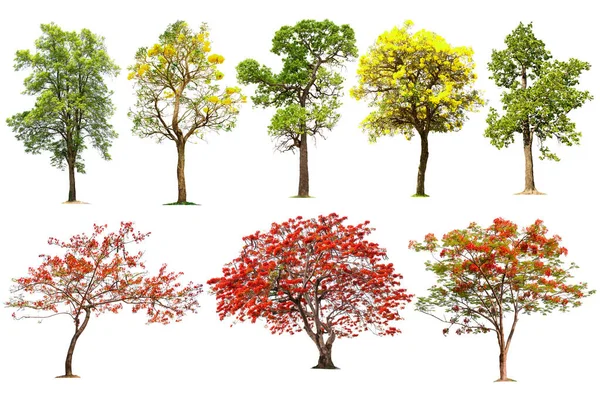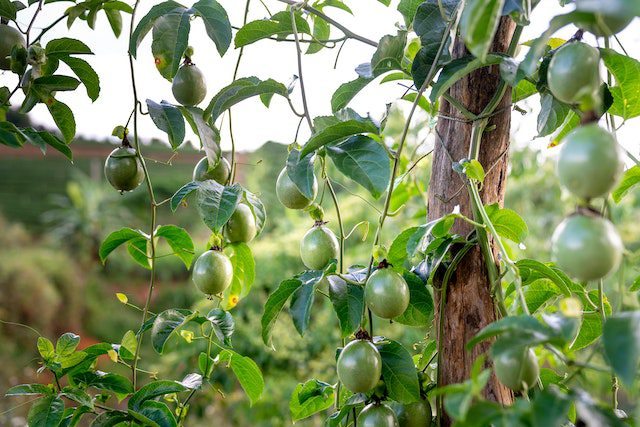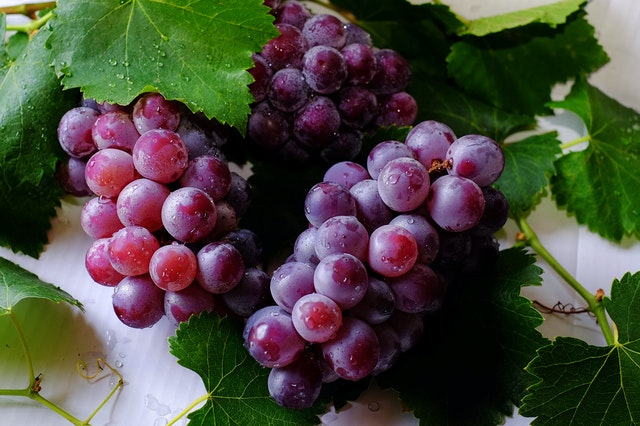Ornamental trees are a fantastic way to enhance the beauty and diversity of your home. They offer unique features such as vibrant flowers, striking foliage, and interesting shapes.
In this comprehensive guide, we explore some of the most popular ornamental trees from around the globe, providing insights into their unique characteristics and why they are treasured in gardens and parks.
Expand Table of Contents
- How do you choose the best ornamental trees for your home
- Japanese Maple (Acer palmatum)
- Cherry Blossom (Prunus serrulata)
- Magnolia (Magnolia spp.)
- Jacaranda (Jacaranda mimosifolia)
- Crape Myrtle (Lagerstroemia indica)
- Dogwood (Cornus florida)
- Olive Tree (Olea europaea)
- Redbud (Cercis canadensis)
- Ginkgo (Ginkgo biloba)
- Eucalyptus (Eucalyptus spp.)
- Royal Poinciana (Delonix regia)
- Silk Tree (Albizia julibrissin)
- Bald Cypress (Taxodium distichum)
- Weeping Willow (Salix babylonica)
- Smoke Tree (Cotinus coggygria)
- Hawthorn (Crataegus spp.)
- Golden Rain Tree (Koelreuteria paniculata)
- African Tulip Tree (Spathodea campanulata)
- Which are the most profitable Landscaping trees in Kenya?
How do you choose the best ornamental trees for your home
There are many trees to plant at your home. To choose the best, there are various factors you must consider the choose the best. They include the soil type in your area, tree rooting behavior and the agroclimatic zone of your area. Additional factors are;
Read Next: Which Are the Best Ornamental Trees in Kenya
- Evergreen trees make better ornamental trees across all the seasons compared to the deciduous trees.
- For a flowering tree, consider their color can easily blend with your house exteriors without clashing.
- Neighbors do not plant trees that easily extend their branches and roots obscuring light or damaging your neighbors’ walls and floors.
Japanese Maple (Acer palmatum)
The Japanese Maple is a stunning tree known for its delicate and colorful leaves. Native to Japan, Korea, and China, this tree is a favorite among gardeners for its versatility and year-round beauty.
The foliage of the Japanese Maple changes color dramatically with the seasons, turning from green in the summer to vibrant reds, oranges, and yellows in the fall. With a typical height of 15-25 feet, it is perfect for small gardens and bonsai.
This tree thrives in well-drained soils and partial shade, making it an ideal addition to diverse garden settings.
Cherry Blossom (Prunus serrulata)
The Cherry Blossom tree is celebrated for its breathtaking display of pink or white flowers in the spring.
Originating from Japan, these trees have become symbols of renewal and the ephemeral nature of life. They typically grow to heights of 20-40 feet and are often featured in festivals around the world, drawing visitors to witness their stunning blooms.
The Cherry Blossom’s brief but spectacular flowering period is a highlight of the gardening calendar, making it a must-have for those looking to create a dramatic spring landscape.
Magnolia (Magnolia spp.)
Magnolias are renowned for their large, fragrant flowers that can range in color from white and pink to purple.
Native to Asia and North America, these trees can grow anywhere from 20 to 80 feet tall, depending on the species. Magnolias are particularly valued for their spectacular blooms that appear in early spring or summer, depending on the variety.
Their sweet fragrance and striking appearance make them a popular choice for gardeners looking to add a touch of elegance to their outdoor spaces.
Jacaranda (Jacaranda mimosifolia)
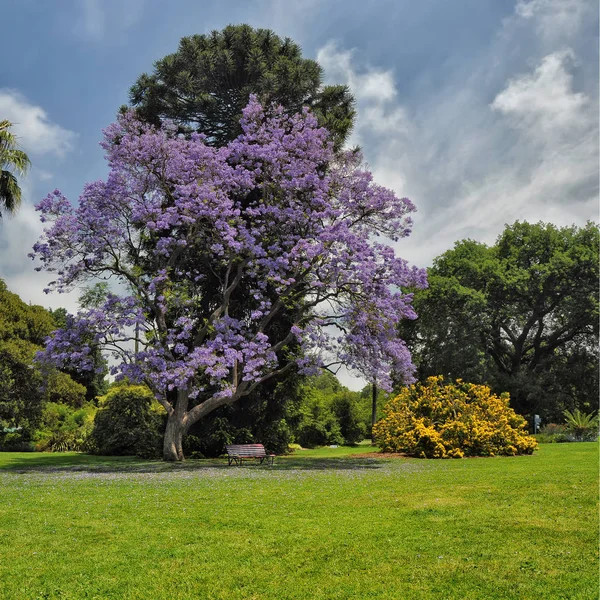
The Jacaranda tree, native to South America, is known for its beautiful lavender-blue flowers that bloom in clusters.
These trees can grow 25-50 feet tall and are often planted in urban areas for their stunning floral display and fern-like foliage. The Jacaranda’s vibrant blossoms create a striking contrast against its green leaves, making it a focal point in any garden.
It thrives in warm climates and well-drained soils, making it a perfect choice for tropical and subtropical regions.
Crape Myrtle (Lagerstroemia indica)
Crape Myrtles are cherished for their long-lasting summer blooms that come in a variety of colors, including pink, red, white, and purple. Native to China, Korea, Japan, and India, these trees typically grow 15-25 feet tall.
They are drought-tolerant and provide year-round interest with their peeling bark and brilliant flowers. Crape Myrtles are ideal for adding vibrant color to gardens during the hot summer months, and their attractive bark provides winter interest, making them a versatile choice for any landscape.
Dogwood (Cornus florida)
Dogwoods are iconic trees from the Eastern United States, known for their stunning white or pink spring flowers, red autumn foliage, and bright red berries.
These trees typically reach heights of 20-40 feet and are highly valued for their multi-seasonal appeal. Dogwoods thrive in well-drained soils and partial shade, making them a perfect choice for woodland gardens. Their vibrant flowers and foliage, along with their wildlife-friendly berries, make them a beloved choice for gardeners looking to create a dynamic and beautiful landscape.
Olive Tree (Olea europaea)
The Olive Tree, native to the Mediterranean Basin, is a symbol of peace and longevity.
These trees grow 25-30 feet tall and feature silvery-green leaves, gnarled trunks, and small white flowers followed by olives. Olive Trees are drought-tolerant and thrive in well-drained soils and full sun. They add a rustic charm to gardens, especially those designed in a Mediterranean style.
Olive Trees are also valued for their fruit, which can be harvested and used in a variety of culinary applications.
Redbud (Cercis canadensis)
Redbuds are native to Eastern North America and are known for their heart-shaped leaves and vibrant pink or purple spring blossoms.
These trees typically grow 20-30 feet tall and offer early spring color that is hard to miss. Redbuds are adaptable to various soil types and are often used in landscape designs to provide a burst of color after the winter months.
Their striking flowers grow directly on the branches, creating a unique and beautiful display.
Ginkgo (Ginkgo biloba)
The Ginkgo tree, native to China, is one of the oldest living tree species in the world.
These trees grow 50-80 feet tall and are recognized for their unique fan-shaped leaves that turn golden yellow in the fall. Ginkgos are highly resilient and can thrive in urban environments, making them a popular choice for city planting.
Their stunning autumn color and unique leaf shape make them a standout in any garden.
Eucalyptus (Eucalyptus spp.)
Eucalyptus trees, native to Australia, are valued for their rapid growth, aromatic leaves, and distinctive bark.
Depending on the species, these trees can grow between 30 and 180 feet tall. Eucalyptus trees are often used in landscaping for their striking appearance and fast growth rate. Their aromatic leaves also make them popular in floral arrangements and as essential oil sources.
Eucalyptus trees are drought-tolerant and thrive in well-drained soils and full sun, making them ideal for warm climates.
Royal Poinciana (Delonix regia)
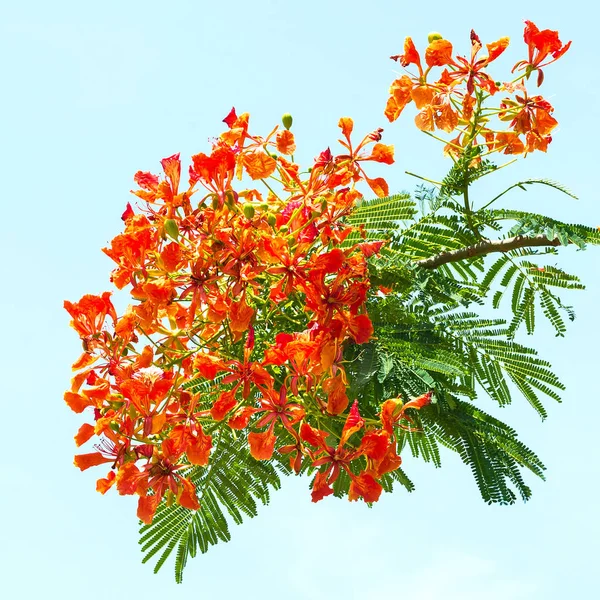
The Royal Poinciana, native to Madagascar, is celebrated for its bright red or orange flowers and wide-spreading canopies.
These trees typically grow 30-40 feet tall and create a dramatic tropical landscape. The Royal Poinciana’s vibrant flowers bloom throughout the summer, providing a stunning display of color.
This tree thrives in warm climates and well-drained soils, making it a perfect choice for tropical and subtropical regions.
Silk Tree (Albizia julibrissin)
The Silk Tree, originating from Asia, is known for its mimosa-like pink flowers and fern-like leaves.
These trees reach heights of 20-40 feet and add a tropical feel to gardens. The Silk Tree’s delicate flowers and light, airy foliage make it a popular choice for creating a relaxed and exotic garden atmosphere.
It thrives in well-drained soils and full sun, making it suitable for a variety of climates.
Bald Cypress (Taxodium distichum)
The Bald Cypress, native to the Southeastern United States, is notable for its needle-like leaves that turn russet in autumn and unique “knees” growing from the roots.
These trees typically grow 50-70 feet tall and thrive in waterlogged soils, making them ideal for planting near water features. The Bald Cypress’s striking autumn color and unique root structures make it a standout in any landscape.
Weeping Willow (Salix babylonica)
The Weeping Willow, originating from China, is iconic for its gracefully drooping branches and long, slender leaves.
These trees grow 30-50 feet tall and are often planted near water features for dramatic effect. The Weeping Willow’s elegant form and rapid growth make it a popular choice for creating a serene and picturesque landscape.
It thrives in well-drained soils and full sun to partial shade.
Smoke Tree (Cotinus coggygria)
The Smoke Tree, native to Europe and Asia, is loved for its unusual flowers that create a smoky effect and its stunning autumn colors.
These trees typically grow 10-15 feet tall and offer vibrant foliage and unique floral displays. The Smoke Tree’s colorful leaves and distinctive flowers make it a standout in any garden. It thrives in well-drained soils and full sun, making it suitable for a variety of climates.
Hawthorn (Crataegus spp.)
Hawthorns, originating from Europe, Asia, and North America, feature white or pink spring flowers, red berries, and thorny branches.
These trees typically reach heights of 15-30 feet and provide multi-season interest. Hawthorns are excellent for hedgerows and wildlife gardens, offering both aesthetic appeal and ecological benefits. Their spring flowers, autumn foliage, and winter berries make them a versatile choice for any landscape.
Golden Rain Tree (Koelreuteria paniculata)
The Golden Rain Tree, from East Asia, is known for its bright yellow summer flowers and attractive seed pods.
These trees grow 30-40 feet tall and add vibrant color and texture to gardens. The Golden Rain Tree’s yellow flowers create a striking display in the summer, while its seed pods add interest in the fall. This tree thrives in well-drained soils and full sun, making it suitable for a variety of climates.
African Tulip Tree (Spathodea campanulata)
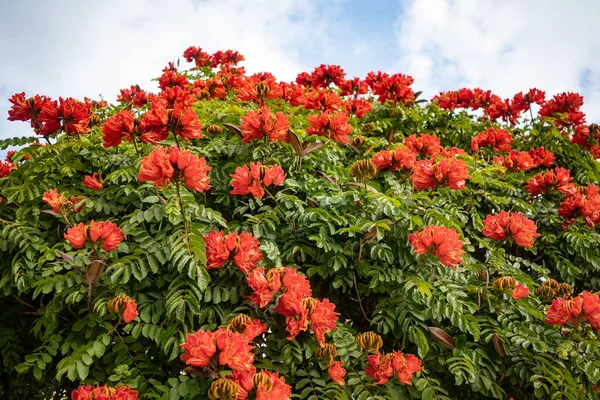
The African Tulip Tree, native to Africa, is a spectacular sight in tropical gardens, attracting birds and adding year-round color.
These trees typically grow 50-80 feet tall and feature large, bright orange-red flowers that bloom throughout the year. The African Tulip Tree’s vibrant flowers and tropical appearance make it a popular choice for creating a lush and colorful landscape.
It thrives in warm climates and well-drained soils.
Which are the most profitable Landscaping trees in Kenya?
Are you a landscaper looking for the best ornamental trees to grow and sell in Kenya? In the list below we give you some decorative trees with the highest demand. They are used for decorative purposes during religious holidays. Besides, you can market them as gifts. The best types are; palm trees, Christmas trees and bonsai trees.
You can propagate a Christmas tree from plant cuttings or seedlings. Grow ones with strong fragrances and branches to carry the Christmas decorations.
Where can you buy the best ornamental trees in Kenya?
To purchase quality compound trees in Kenya, consider reputable nurseries and landscaping companies such as
- Green Future Tree Nursery
- Alpha Tree Nursery
- K Tree Enterprises
- Unique Landscapes Kenya Limited
- Goldenscape Tree Africa
- Willy M Kihara Tree Nursery
- Urban Plants
These sources offer a variety of ornamental trees.
Conclusion
Ornamental trees add incredible beauty and diversity to gardens around the world. From the vibrant Cherry Blossom and Royal Poinciana to the unique Japanese Maple and Ginkgo, these trees offer stunning visual displays and ecological benefits. Choose the right trees for your climate and soil type to create a breathtaking and sustainable garden.
